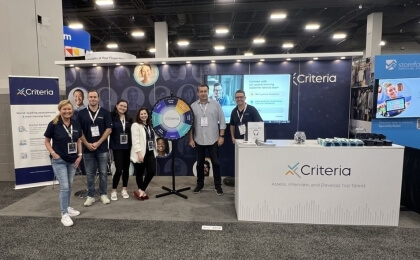Amidst all the buzz over the advent of “big data,” HR departments are increasingly focused on using data to improve their talent acquisition strategies. In our particular business - developing pre-employment assessments used by businesses to help inform their hiring decisions - we are seeing an increasing willingness on the part of employers to adopt evidence-based hiring tools. The goal of all this is simple: better hiring results, or in other words, improvements in quality of hire (QoH).
There is widespread consensus about this: in a recent LinkedIn survey on recruiting trends in 2016, talent leaders cited quality of hire as the most important metric for tracking success in the recruiting process. Another finding, while not surprising, highlighted a central challenge that hiring managers face: only a third of the respondents felt that their methodologies for measuring quality of hire were strong.
It’s difficult to uncover what parts of the recruitment process are working without a metric for measuring job success once a person is hired. While tracking some quality-of-hire related measures (such as retention) is relatively straightforward, getting to a unified performance metric that summarizes whether someone is a good hire or not can be very difficult.
We encounter this problem often when doing local validity studies, which are essentially a way to analyze how successful a pre-employment test is at predicting success for a particular role in a specific organization. The typical process for doing these studies is to administer the tests to a group of employees - customer service reps, for example - and then to compare the test results to the employees’ performance metrics. By tying your employees’ pre-hire test scores to their eventual work performance, you gain insight into how predictive and effective your employee selection criteria is. This can give credence to your current tactics or help you identify ways to improve your recruitment process.
One problem that often arises with local validity studies is when companies don’t have meaningful performance metrics in place. Alternatively, they may be able to provide performance metrics, but have little confidence that the metrics reflect who top performers are, or can’t agree internally as to the appropriateness and accuracy of those metrics. This presents a huge problem: how can you predict what you don’t measure, or don’t measure accurately? The CEO of Hogan Assessments, a competitor of ours, expressed the problem well when he wrote that using data-driven hiring techniques without tracking quality of hire is “the equivalent of investing a great deal of money in weather forecasts without subsequently paying attention to the actual weather.”
So whether quality of hire metrics come from supervisor performance ratings, tangible business metrics (such as sales volume or customer satisfaction ratings), retention rates, or some combination thereof, it is important to invest time in coming up with performance metrics that measure something meaningful and that all stakeholders agree represent something real. Absent this, there is no point in spending time trying to predict who will be a good hire if you can’t agree on a definition of success once the hire is made.




